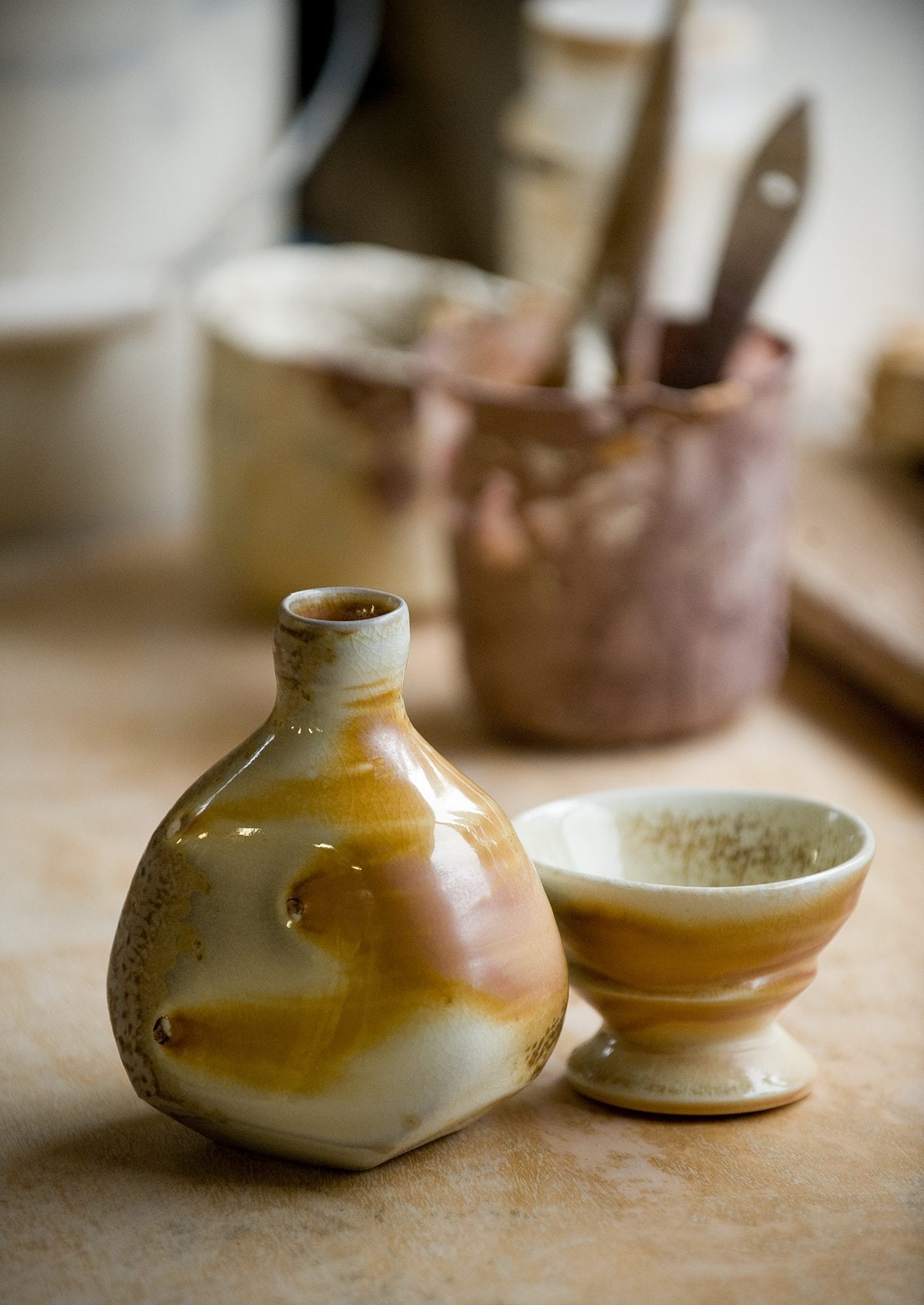FINN HILL — The “comets” are the key.
Stephen Mickey showed off some of the clay creations that have emerged from his wood-fired kiln, pointing out the colorful spots and splashes, the light and dark sides, the whites that turn glowing red, the reds that deepen to a rich mahogany.
“You don’t know how it’s going to come out,” he said. “Things are beyond your control in the kiln.”
And that’s what’s wonderful about firing clay in Mickey’s 16-foot-long Anagama, a wood-fired oven based on an ancient Japanese design. The types and blends of wood chosen, many days of continuous firing and the way the fire travels down the brick tunnel all contribute to intricate and fascinating irregularities in the final glaze.
“This is the aesthetic we prefer,” said fellow potter Robin Hominiuk, who has her own studio in Ridgefield. “It’s organic. Each piece is unique.”




